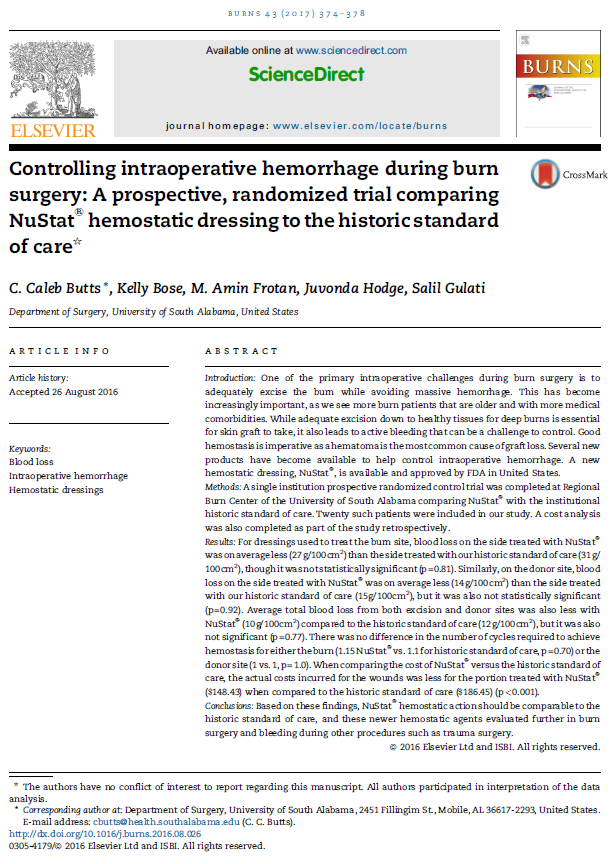C. Caleb Butts, Kelly Bose, M. Amin Frotan, Juvonda Hodge, Salil Gulati
Department of Surgery, University of South Alabama, United States
Results:
For dressings used to treat the burn site, blood loss on the side treated with NuStat® was on average less (27g/100cm2) than the side treated with our historic standard of care (31g/100cm2), though it was not statistically significant (p=0.81).
Similarly, on the donor site, blood loss on the side treated with NuStat® was on average less (14g/100cm2) than the side treated with our historic standard of care (15g/100cm2), but it was also not statistically significant (p=0.92). Average total blood loss from both excision and donor sites was also less with NuStat® (10g/100cm2) compared to the historic standard of care (12g/100cm2), but it was also not significant (p=0.77). There was no difference in the number of cycles required to achieve hemostasis for either the burn (1.15 NuStat® vs. 1.1 for historic standard of care, p=0.70) or the donor site (1 vs. 1, p=1.0). When comparing the cost of NuStat® versus the historic standard of care, the actual costs incurred for the wounds was less for the portion treated with NuStat® ($148.43) when compared to the historic standard of care ($186.45) (p<0.001).
Conclusions:
Based on these findings, NuStat® hemostatic agents should be comparable to the historic standard of care, and these newer hemostatic agents evaluated further in burn surgery and bleeding during other procedures such as trauma surgery.




